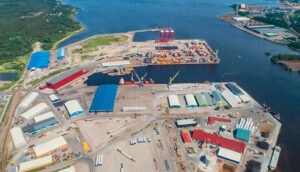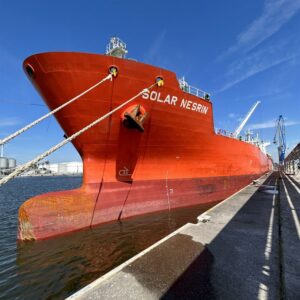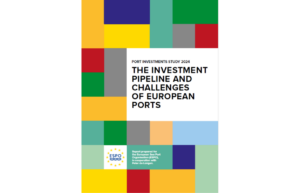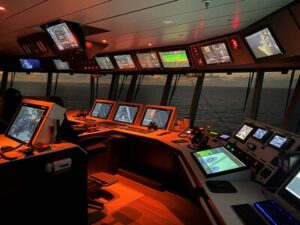The Port of Stockholm, the Freeport of Riga Authority, and Riga Ropax Terminal have signed a Memorandum of Understanding (MoU) to apply for joint EU funding to reach their environmental targets.
More specifically, the ports aim to use this funding to reduce the impact of port activities on the environment in the areas surrounding the passenger terminals in the capital cities.
The goal is to build a sustainable foundation for the future reintroduction of the important maritime transport route between the neighbouring countries and to ensure climate neutrality.
The Freeport of Riga Authority and Riga Ropax Terminal are also part of the MoU to improve connectivity between Riga and Stockholm and develop a brand new RoPax terminal in Riga.
READ: Ports of Stockholm strikes green hydrogen deal at container terminal
Historically, there has been a stable maritime daily connection between Stockholm and the Latvian capital city, Riga.
Since 2010, services known as RoPax, carrying both passengers and goods cargo, sailed from the Värta Terminal in Stockholm.
Prior to the COVID-19 pandemic, an average of just over 700,000 passengers used the sea-route between Stockholm and Riga each year.
During the spring of 2020, the shipping company operating the Riga-Stockholm route decided to suspend services due to the severe drop in passenger numbers caused by the pandemic, which made the route unsustainable financially.
READ: Warehouses put into operation at Riga Port
The MoU and the future joint project also aims to fulfil the EU “Fit for 55” goal to reduce net emissions of greenhouse gases by at least 55 per cent by the year 2030.
Ansis Zeltins, CEO of the Freeport of Riga Authority, stated: “The development of environmentally friendly and future-oriented passenger infrastructure, as well as the improvement of connectivity within our port, is a key strategic goal for Freeport of Riga.”
“The signing of this Memorandum emphasizes our joint effort to address existing and future environmental challenges, particularly in the scarce Baltic Sea region, while promoting the development of modern port infrastructure and building sustainable and ‘green’ passenger and freight services between our ports,” Zeltins added.
READ: Stockholm Norvik Port aims to become CCS node
Jūlija Bērziņa, Chair of the Board, as well as Head of the Riga Ropax Terminal project also emphasized: “The team at the Riga Ropax Terminal is thrilled about the signing of this Memorandum and the future cooperation it represents.”
This is especially significant as we are currently working on the new passenger terminal project in Riga, with a goal of becoming operational and welcoming our first passengers in 2027.”
“This step will enable us to collaborate more closely and leverage European funding to achieve our shared goals, and work together more effectively towards sustainable development, including the potential to expand maritime passenger transport,” Bērziņa added.
Earlier in the year, it was reported that the Port of Riga saw an increased container volume in 2022, having recorded a throughput of 460,700 TEU surpassing the previous year’s figure by 16 per cent.
More recently, Sweden’s newest major freight port, Stockholm Norvik, was officially inaugurated after opening in 2020.









